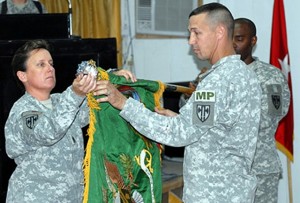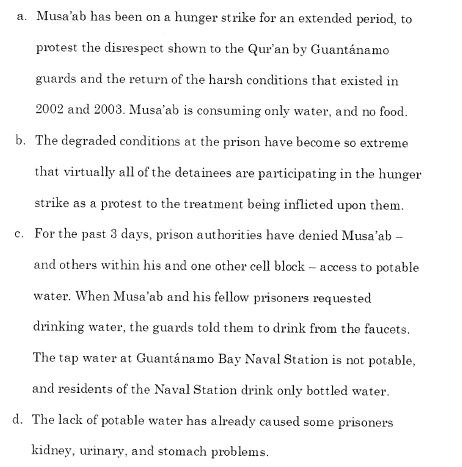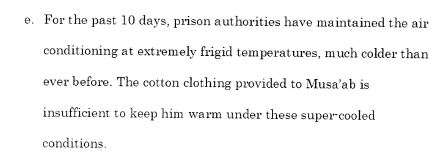New York Times Runs Powerful Op-Ed By Gitmo Prisoner
With the simple title “Gitmo Is Killing Me”, today’s New York Times carries a chilling first-hand account from a hunger-striking prisoner at Guantanamo. Samir Naji al Hasan Moqbel is one of 25 Yemeni prisoners held at Guantanamo who have been cleared for release but are still held because the US feels Yemen is too unstable for the prisoners to return there.
A theme that I keep returning to regarding the hunger strike at Guantanamo is that the military is conducting an information operation to limit damage to its reputation through reducing attention to the harsh treatment guards mete out to the prisoners. That is why, as I pointed out yesterday, Saturday’s operation to shut down the communal areas at the prison and return the prisoners to individual cells was carried out after the ICRC left and at a time when no members of the press were present. With that in mind, the military is very likely to view the publication of this piece as a huge loss of control of the narrative. While they had portrayed the Saturday action as taking place against resistance by the prisoners using “improvised weapons” (a description that was avidly eaten up by the press), Naji’s account of the pain and humiliation of forced feedings changes the focus from violence by the prisoners to violence being visited upon them.
The Times explains that Naji “told this story, through an Arabic interpreter, to his lawyers at the legal charity Reprieve in an unclassified telephone call”. Given previous behavior by the military at Guantanamo, I hope that they do not used their embarrassment over publication of this piece to limit phone calls from prisoners to their attorneys.
Naji explains his situation:
I’ve been on a hunger strike since Feb. 10 and have lost well over 30 pounds. I will not eat until they restore my dignity.
I’ve been detained at Guantánamo for 11 years and three months. I have never been charged with any crime. I have never received a trial.
Naji is 35 years old, so he has been a prisoner at Guantanamo for nearly a third of his life. He has never been charged. He has never been tried. Is it any wonder that he would give up hope and choose to starve himself to death?
Naji’s account of the forced feedings is horrifying:
There are so many of us on hunger strike now that there aren’t enough qualified medical staff members to carry out the force-feedings; nothing is happening at regular intervals. They are feeding people around the clock just to keep up.
During one force-feeding the nurse pushed the tube about 18 inches into my stomach, hurting me more than usual, because she was doing things so hastily. I called the interpreter to ask the doctor if the procedure was being done correctly or not.
It was so painful that I begged them to stop feeding me. The nurse refused to stop feeding me. As they were finishing, some of the “food” spilled on my clothes. I asked them to change my clothes, but the guard refused to allow me to hold on to this last shred of my dignity.
Most human rights groups object to the practice of forced feedings of hunger striking prisoners. Carol Rosenberg quotes Physicians for Human Rights: Read more →




